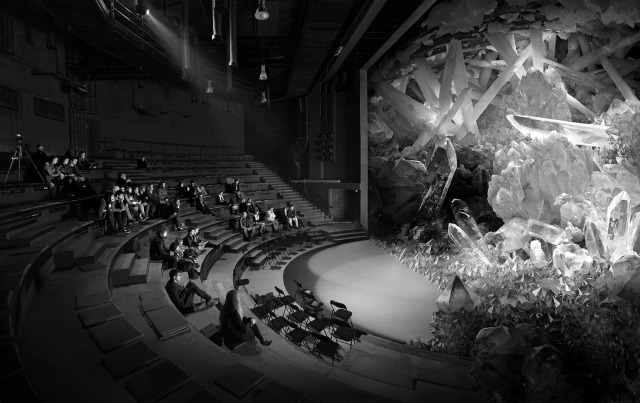 [Image: Tanja Deman]
[Image: Tanja Deman]
In an earlier post, I connected typography and bookmaking to James Gibson’s theory of affordances, the idea that perception is layered less with the properties of individual objects and more with the possibilities for action they enable or afford. The basic idea of this application is that books provide a detailed and intentional set of affordances for a certain kind of understanding, and that typography and bookmaking are from this perspective intricate material practices for the installment of conversions in apprehension, for the reshaping of awareness through the mode of discursive engagement.
As I noted in the original post, on this view books are things we think with and through rather than storehouses we download from. The art of writing and bookmaking, then, is the intentional creation of affordances that make such transformations of experience possible. The book is the environment in which such affordances can endure. It’s in the context of designed affordance environments—settings created with the expressed purpose of enabling certain experiences—that I find interesting Peter Sloterdijk’s reflections on architecture and epoché.
Exploring Edmund Husserl’s concept of the epoché—which John Cogan aptly defines as “the name for whatever method we use to free ourselves from the captivity of the unquestioned acceptance of the everyday world”—Sloterdijk sees an architectural parallel in Plato’s Academy. That is to say, in much the same way that books are affordances for thinking rather than representations of thought, architecture affords something like an environmental epoché, a design space intended to produce effects in the person. Sloterdijk writes:
Plato was concerned to provide appropriate accommodation for persons in the precarious state of complete devotion to their thoughts. The original Academy was dedicated to nothing other than innovation in spatial creation. It was an unprecedented new institution for accommodating absences that occur on the quest for the still largely unknown connection between ideas and—why not?—the study of the connection between words and things, which, if you really think about it, can only be problematic. The academy is the architectural equivalent of what Husserl apostrophized as epoché—a building for shutting out the world and bracketing in concern, an asylum for the mysterious guests that we call ideas and theorems. In today’s parlance, we would call it a retreat or a hideaway. (The Art of Philosophy, 32–33)
So, the book, the notepad, the retreat, the academy, the library—these are all designed affordance spaces, mostly backgrounded in action, but often preconditions for certain kinds of thinking. The extended activity of mind in this way takes as its condition of possibility a whole media ecology of material affordance spaces, sets of architectural epoché that complement and enable the individual’s capacity to perform certain maneuvers in thought, maneuvers that make apparent the material conditions of possibility required for the bios theoretikos (the life of contemplation).
Nicely said! Sloterdijk says some similar things about the epoché in Foams. Spaceships are a contemporary form of the architectural epoché. “Space travel serves contemporary philosophy as the radicalization of the epoché. Upon reentering the ‘lifeworld,’ the view of the theory glider takes a series of eccentric pictures” (339). Speaking of media ecology, here’s a comment about acoustic isolation. “Husserl’s epoché still followed on from this cultivation of withdrawal from group noise in one’s own head. What the phenomenologists called the bracketing of the naive attitude to life is in essence an active holiday from the prejudices and gesticulations that cause the interior to be as loud as the exterior. What is a firm conviction but a firmly trained, loud inner voice? This doxic screaming inside me is silenced by philosophical meditation” (359)
LikeLiked by 1 person
Very cool, Sam. “Spaceships and Epoché” is definitely my kind of headspace.
LikeLike
good stuff adam, have i shared with you the work of jonathan hale?
LikeLike
I don’t think so. I’ll check it out.
LikeLike
LikeLike
Reblogged this on synthetic zero.
LikeLike
the emphasis on construction here is welcome, I would add more of an in-Process emphasis on contingency and ad hocery for human-being(s) as well as the counter-weight of cognitive-biases.
LikeLike
Click to access b6607952026dfe9d15daa96b6431d5eb5311.pdf
LikeLike
http://www.patheos.com/blogs/americanbuddhist/2018/07/zen-training-101-with-the-help-of-an-art-studio-manual.html
LikeLike